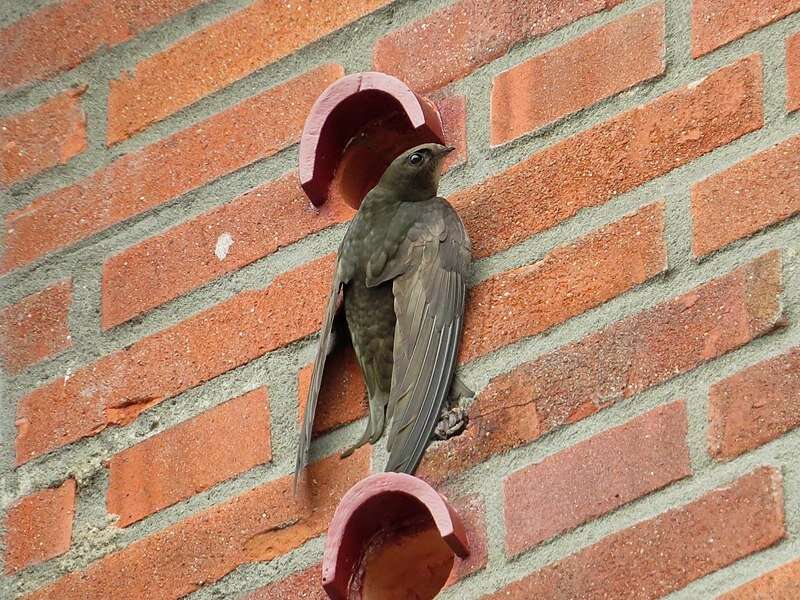April 13, 2022 report
Common swifts use daily torpor to save energy during breeding season

A team of researchers from the University of Siegen's Institute of Biology in Germany, working with a colleague from Marburg University, also in Germany, has found that common swifts use daily torpor as a means of saving energy during their breeding season. In their paper published in the journal Biology Letters, the group describes their non-invasive study of the migratory birds and what they learned about their ability to save energy during cool nights in Europe during the breeding season.
Common swifts are migratory birds that fly between the Arctic and Europe and are well known for their long-duration flights—they stay aloft approximately 99% of the time. Their downtime occurs during breeding season in Europe.
Common swifts survive by eating insects they catch in flight. But when they have to land to breed, they are less able to find food and have developed another means for conserving energy—they enter a torpor state.
Torpor states are similar to sleep states except that metabolism slows much more dramatically. Torpor has been compared to short-term hibernation. When a creature such as a bird is in a torpor state, it uses far less energy. To learn more about this state in common swifts, the researchers placed tiny thermometers in the nests of approximately 50 bird pairs over eight seasons, along with equally tiny calorimeters to measure the metabolism rate of the birds in the nest.
The researchers found that the temperature in the nests dropped on average 8.6 degrees Celsius at night compared to daytime temperatures, for an average of 24.3 degrees Celsius. They also found that as the temperatures dropped, the metabolism rate of the birds dropped dramatically on the coldest nights—evidence of a torpor state. They found the birds in a torpor state reduced their metabolism rate by approximately 56% compared to daytime rates. On nights that were not so cold, the birds did not go into a torpor state but still lowered their metabolism by about 33% on average.
The researchers found that as the chicks hatched, all of the residents of the nest went into torpor states together, though they were not able to determine how it was coordinated among them.
More information: Arndt H. J. Wellbrock et al, Cool birds: first evidence of energy-saving nocturnal torpor in free-living common swifts Apus apus resting in their nests, Biology Letters (2022). DOI: 10.1098/rsbl.2021.0675
Journal information: Biology Letters
© 2022 Science X Network





















